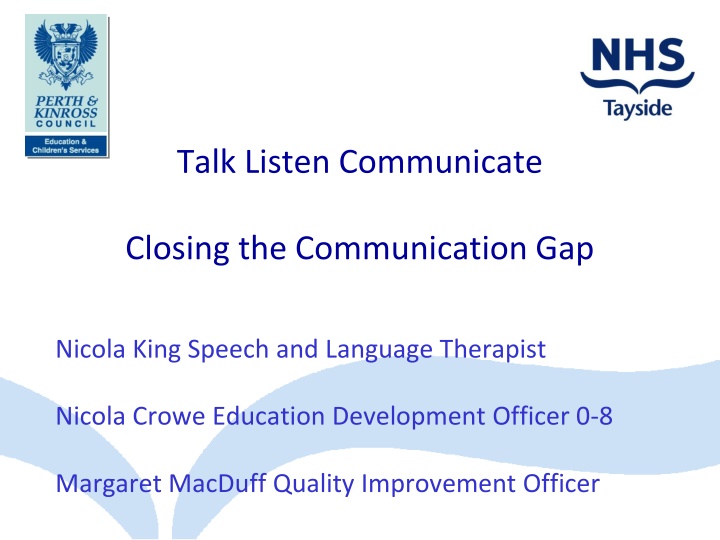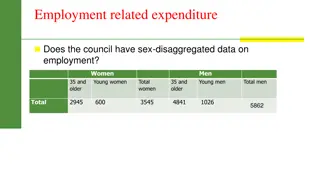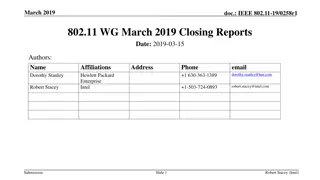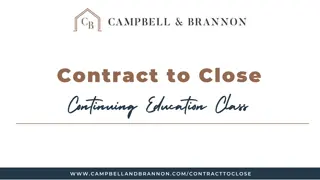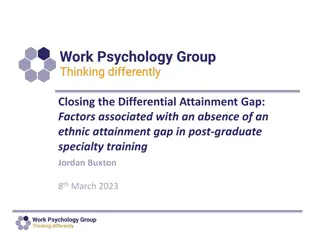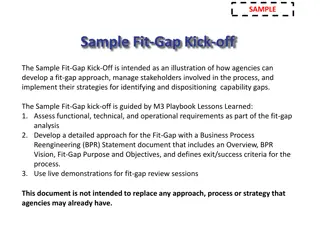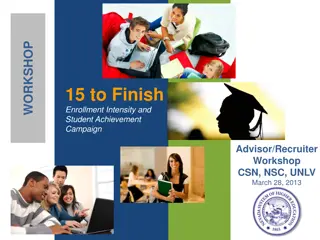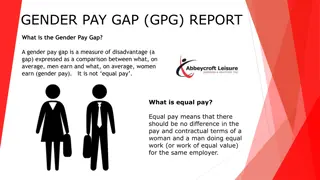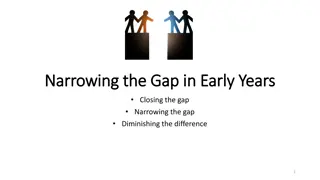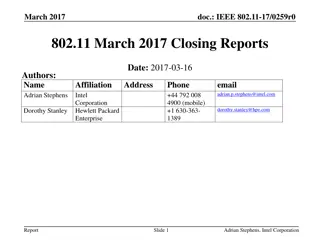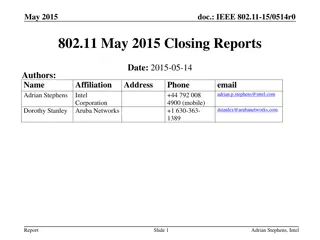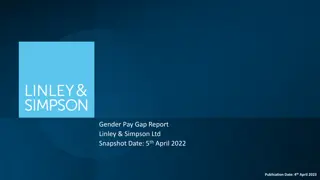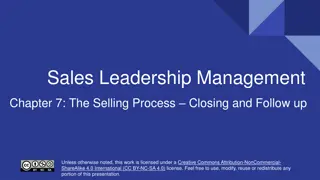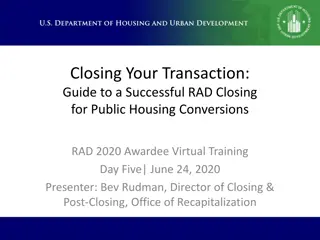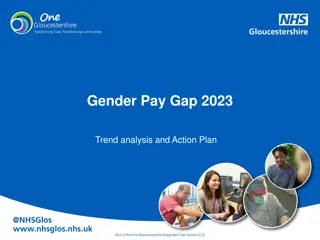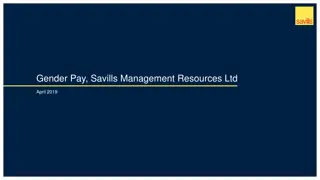Closing the Communication Gap for Child Development
Addressing the communication gap is crucial in bridging the educational disparity between disadvantaged and privileged children. The initiative focuses on enhancing language skills, adult-child interactions, and early literacy through evidence-based strategies and activities. Training sessions aim to boost understanding of children's language development and equip staff with tools to enrich children's speech and language abilities. Parents are also encouraged to engage in interactive sessions for fostering language growth in their children. The program aims to empower educators, parents, and caregivers to support children's language and literacy skills effectively.
Download Presentation

Please find below an Image/Link to download the presentation.
The content on the website is provided AS IS for your information and personal use only. It may not be sold, licensed, or shared on other websites without obtaining consent from the author.If you encounter any issues during the download, it is possible that the publisher has removed the file from their server.
You are allowed to download the files provided on this website for personal or commercial use, subject to the condition that they are used lawfully. All files are the property of their respective owners.
The content on the website is provided AS IS for your information and personal use only. It may not be sold, licensed, or shared on other websites without obtaining consent from the author.
E N D
Presentation Transcript
Talk Listen Communicate Closing the Communication Gap Nicola King Speech and Language Therapist Nicola Crowe Education Development Officer 0-8 Margaret MacDuff Quality Improvement Officer
Closing the Communication Gap Background Closing the attainment gap between the most and least disadvantaged children is a key priority within National Improvement Framework for Scottish Education. Research tells us that at age three the average vocabulary scores for children from low-income households are significantly below that of children from high-income households and at Primary 1 there is a gap of 18 months difference.
Driver Diagram drawn from S-BAR project (education) Primary drivers Aim Staff be released for training All Nursery Staff in SIMD group (16 Closing the Gap schools)will be able to use up to 7 focussed activities in daily/weekly practice to support oral language skills in ALL children in their setting By June 2017 Choice of Evidence Based strategies offered Resources made available Settings were supported Universal Level Measures Quantative and Qualitative
Aims of Sessions1 Deeper knowledge and understanding of children s language development Improve the quality of Adult Child Interaction Skills Build confidence in providing activities to enrich children s language skills Raised awareness of children s speech and language difficulties Raised awareness of activities to support early reading
Whats on the menu? Evidence based strategies For STAFF 1. Adult Child Interaction Skills Peer observation tasks Smart targets for children For CHILDREN 2. Vocabulary Enrichment 3. Early Literacy Skills Phonological Awareness Auditory / Visual Discrimination and Sequencing 4. Pathway to Stories For MUMS and DADS 5. Bite and Blether Sessions 6. Blether Bags Chatting to Children Bed Time reading Fun with singing and rhymes
For staff Input store output
1.Date Reviewer Activity 2.Date Reviewer Activity 3.Date Reviewer Activity Adult Child Interaction (ACI) Language Development (descriptive language) Extra Gain child s attention (be face to face) Observe and listen Follow child s lead in play Give child time to listen and respond Speak at the child s level Model language for the child Repeat what the child says or does Support understanding Gestures Comment on what the child is doing or extend utterance Use open ended questions Use child s name Singing Praise I I II II II I II IIII I IIIII III II I IIIII I Points to remember Be careful with questions (quality not quantity) and directions Use choice questions to support language ( Would you like.. water or milk?) Good use of commentary Used children s name to gain attention Give more time for children to respond to questions
Talk Listen and Communicate Pledge Talk Listen and Communicate Pledge (Closing the Communication Gap) ( Following the TLC training we will make sure that when we are working with children we will in order to support children s communication. signed dated
For children Vocabulary Enrichment Early Literacy Skills Phonological Awareness Auditory / Visual Discrimination and Sequencing Pathway to Stories
A Language Rich Environment cutlery sink bottles cups bowl plates blanket pillow washing machine pots pans oven microwave towel dish cloth apron knife fork spoon cot high chair brush cloth sponge soap ironing board cooker kettle tea towel utensils crockery china tablecloths napkins table mats ladle sieve breakfast lunch dinner supper snack bed time Mummy Daddy brothers sisters family baby eat drink eating drinking cooking sleeping singing mix whisk stir beat pouring filling washing bake washing up big small biggest smaller bigger like lumpy hot cold heavier lighter heaviest lightest tasty careful hard soft safety hot cold
Early Reading Skills Visual discrimination/memory Auditory discrimination/memory Pattern and rhythm of words
Bite and Blether Targeted children (not EAL) Invite from child to parent Session 1 Very low key (build relationships) Session 2 Storytelling session Session 3 Singing session
Blether Bags Early Education Strategy: Early Intervention Blether Bag 12 Prompt Card PICK AND MIX PEOPLE Describe the exciting characters!
TIMELINE 18 months Session 1 January 2016 Follow up activity February/March 2016 Session 2 March 2016 Action Plan April /June 2016 Follow Up visit October 2016 Used Building the Ambition framework e.g. Experiences which Adults who Environments which Embedded; developing; not yet started Recall day March 2017 Further action plan April June 2017 Parental feedback data November 2017
What did we measure? Changes in staff awareness and practice Quantitive Qualitative
P1 Data Very good progress 15/16 16/17 Listening and Talking Reading Writing 68% 51% 49% 89% 72% 74% Listening and Talking Reading Writing 100% 96% 96% 100% 81% 88% Listening and Talking Reading Writing 78% 72% 62% 85% 82% 82% Listening and Talking Reading Writing 95% 95% 95% 96% 96% 96% Listening and Talking Reading Writing 98% 98% 98% 97% 92% 92% Listening and Talking Reading Writing 89% 89% 89% 89% 89% 89%
How did we make it work? Groups provide strength Joint approach agency level Previous experience Inspire and engage staff Content - appealing Achievable - belief they can do it Took time to embed properly Supported by teachers See progress in children True Coproduction - original ideas Ownership- teams at community level
Final thoughts from staff Closing the Communication Gap training has empowered staff to actively think about and prepare for introducing new vocabulary to children, to take the time to embed knowledge through language in children. By taking a journey of language on a pathway to story or a song and threading this through the whole curriculum all staff have embraced the teachable moments that can arise. All parents have commented on the rich vocabulary that their children are sharing at home.
Final thoughts from staff We have used a number of focussed interventions since 2016 and up to the present to close the communication gap. Particularly successful have been Brunch and Blether sessions and the blether bags which were created for home- nursery links. The whole staff team have become focussed on having a vocabulary rich environment and a focus upon the spoken words that we use with and teach children. The work is ongoing and elements of pathways to stories are starting to be implemented.
